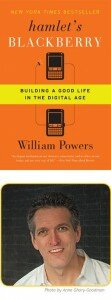
Binary options are becoming more and more popular and of course, there are reasons for that. For many investors, the main argument in favor of binary options is their simplicity.
Indeed, this option type is particularly easy to understand and trade. Basically, there are only two possibilities. You bet on rising or falling prices. The digital option, that is what a binary option is also called, has a fixed expiry time which decides on win or loss. If you bet on “price rises” -in order to make profit- the option needs to note higher at expiry time, compared to the initial course
– vice versa if you bet on “price falls”.
With binary options, you invest indirectly, that means you bet on an underlying financial instrument. This can be a currency pair such as EUR-USD, a share, a stock index, or even commodities, such as gold, silver or crude oil. So you have a wide field of application and you are able to diversify very well with binary options, apply them for hedging strategies or for idle speculation.
Even if trading is dead easy with this financial product, it requires a lot of knowledge, discipline and more or less complex strategies in order to really make profit. Read on to find out what matters or check out this Swedish site www.binaraoptionerhandel.com or this binary options site from the Netherlands www.binaireoptiehandel.net.
Technical or fundamental analysis

This can either be the technical or the fundamental analysis, but also a combination of both.
The technical analysis mainly deals with evaluating charts and chart patterns. It is sometimes said about this analysis to be hocus pocus, but if you take a closer look at it, you can easily see that the technical analysis works. Indeed, this analysis is based on psychological principles that reflect in charts in an abstract way. And as you might already know: the stock market is mainly pure psychology.
On the other hand, with the fundamental analysis, the focus is clearly different. It generally deals with certain key figures, either of business or national economic nature, and their effects on the respective security paper.
Money-Management

If you have enough discipline and consequently implement the simple principles, you can never lose your entire assets and there is enough scope for studying and learning the trade.
Profit expectation
How high is the profit expectation really with binary options? People advertize with spectacular figures of 80 % profit per trade! Can that be true?
The figures are correct. However, you need to consider that we are talking about “all-or-nothing” trades. Either you win or lose the whole bet. That is why you always can only bet a fractional amount of your trading assets (not more than 3 %!).
Let us just take a look at a small example. A broker pays you 80 % per won trade. Your trading assets amounts to €10,000 and from the past 1000 trades, you know that you meanwhile win about two thirds of all your trades with your strategy. You keep applying the money management with discipline and therefore, you do not bet more than € 300. Your profit expectation per trade is
(2/3 * 0.8 * € 300) – (1/3 * 300) = €60. This means, you win €60 per trade on average.
This is only a statistical figure and of course, you could lose 10 trades in a row. But in the long term, this does not change the profit expectation.
Conclusion
Binary options are a new and very simple financial product which is also the reason why they are very popular. However, you should not let yourself be fooled since making great profit is relatively hard. This can mainly be traced back to the fact that you need a relatively high profit probability
in order to be successful in the long term. Therefore, you need the right strategy which, unfortunately, we cannot tell you at this point.
References:
http://en.wikipedia.org/wiki/Binary_option
http://finance.yahoo.com/q?s=EURUSD=X
http://binaraoptionerhandel.com/
http://binaireoptiehandel.net/
http://www.amazon.com/Technical-Analysis-Financial-Markets-Comprehensive/dp/0735200661/
http://www.investopedia.com/university/fundamentalanalysis/








 William Powers, author of Hamlet’s BlackBerry, traces the history of human communication technologies and the ways in which they shape our social life. He writes about the contrasting values of breadth and depth. Modern communication technologies bring us unprecedented breadth, which can help us to experience new perspectives and develop wide-ranging connections. If we want these connections to have depth we need to be mindful in our use of these technologies, deliberately creating some spaces in which to step back from the constant stream of information and reflect on the meaning of those communications that we value most. His own family takes ‘digital sabbaths”; on weekends they disconnect from the Internet, television etc. and take time to reflect quietly, read books, have face-to-face conversations and write letters. They return to the world of instant communication with renewed energy and focus. Other people find value in celebrating Screen-Free Week, seven days in which free time is spent in nature, in solitude or in live human interaction instead of in screen-time. The idea isn’t to condemn instant communication technologies but to help us use them intentionally.
William Powers, author of Hamlet’s BlackBerry, traces the history of human communication technologies and the ways in which they shape our social life. He writes about the contrasting values of breadth and depth. Modern communication technologies bring us unprecedented breadth, which can help us to experience new perspectives and develop wide-ranging connections. If we want these connections to have depth we need to be mindful in our use of these technologies, deliberately creating some spaces in which to step back from the constant stream of information and reflect on the meaning of those communications that we value most. His own family takes ‘digital sabbaths”; on weekends they disconnect from the Internet, television etc. and take time to reflect quietly, read books, have face-to-face conversations and write letters. They return to the world of instant communication with renewed energy and focus. Other people find value in celebrating Screen-Free Week, seven days in which free time is spent in nature, in solitude or in live human interaction instead of in screen-time. The idea isn’t to condemn instant communication technologies but to help us use them intentionally.